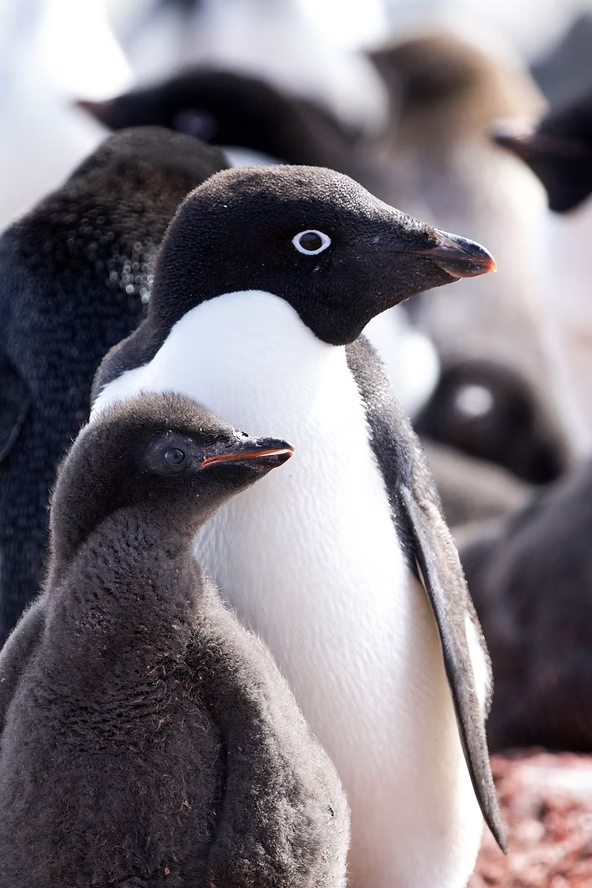Adélie Penguins: Antarctic Icons
The Adélie penguin is a small Antarctic species closely related to gentoo and chinstrap penguins. Together, these three species form the brushtail group. Adélie penguins are easily identified by their black back and head, white front, and a distinctive white eye ring that makes them stand out in the icy landscape.
Nesting and Parenting Habits
Unlike some penguins, Adélies nest on rocky shores instead of ice. Each breeding season, pairs build stone nests where they lay and incubate two eggs. Both parents share responsibilities—while one tends the eggs, the other hunts for food. This cooperative behavior is crucial for the survival of their chicks.
Feeding on Krill
Adélie penguins are skilled foraging predators, consuming a variety of prey, though krill remains their primary food source. Interestingly, their dependence on krill is relatively recent, linked to the decline of other krill-eating predators such as fur seals and baleen whales, which were heavily reduced by overhunting. Today, krill makes up a consistent and essential part of the Adélie diet.
Migrations and Survival Strategies
Outside of nesting season, Adélies embark on long winter migrations. They follow the expanding ice edge, using the ice for both resting and feeding opportunities. Despite thriving in the harsh Antarctic environment, these penguins display cautious group behaviors. At water’s edge, they often gather in dense clusters, reluctant to be the first to dive. Typically, only after one penguin is pushed or falls into the water and is seen swimming safely do the others follow. This strategy likely reduces the risk of predation by leopard seals, killer whales, and other predators.
Curious Nature and Research Interest
Adélie penguins are notably curious around humans, often approaching researchers without hesitation. Their approachable behavior, combined with their abundance, has made them one of the most extensively studied penguin species. Decades of scientific observation have provided deep insights into their ecology, social habits, and environmental challenges.
Conservation Challenges
Despite current stable population trends, the Adélie penguin faces significant threats:
- Habitat pressure: Expansion of research stations reduces available nesting areas.
- Overfishing: Heavy harvesting of krill and related prey could undermine food security.
- Climate change: Shifts in the Southern Ocean food web may offset benefits of ice retreat.
Scientists emphasize the importance of marine protected areas, especially in regions like the Ross Sea where Adélies spend much of the year. Such protections could help safeguard their food supply and breeding grounds.
A Symbol of Resilience
The story of the Adélie penguin is one of adaptability and resilience, but also of vulnerability in a rapidly changing environment. Protecting these birds requires international cooperation, sustainable fishing practices, and meaningful action against climate change. As one of Antarctica’s most studied species, the Adélie penguin offers not just a glimpse into the frozen south but also a warning of what is at stake if environmental threats go unchecked.

